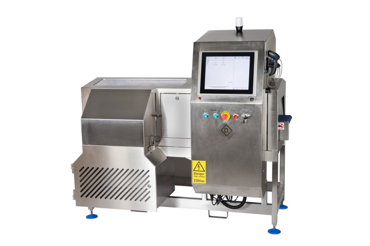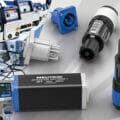By Dr Russell Sion, Director
In any business world, data is reshaping the landscape. Food processing is no exception. If we consider the next big technology development, it will inevitably be a non-incremental, non-organic, move away from human labour and towards automation. In food production humans generally perform two sub-tasks for each primary task. In virtually every case, one of these sub-tasks is checking/quality control.
After biological contamination, label related defects are cited as the second most common cause behind costly and brand-damaging product withdrawals and retailer returns. There are several powerful reasons to ensure that the labelling of food products is correct. From the perspective of a food processor, the reasons broadly fit into three categories – improved production efficiency, waste reduction and regulatory compliance.
Boosting production efficacy
Automated label verification has a huge part to play in increasing production line efficiency in food factories. Many applications which were previously deemed uneconomic to automate are now being automated based solely on the unavailability of a skilled workforce.
Using technology to verify the label offers far greater benefits compared to manual inspection. Given today’s production speeds, it’s impossible for one human to accurately read and process all the data for an entire shift. Let alone check all elements of the label integrity, use by dates, country of origin, special promotions and cooking time. Operative fatigue swiftly kicks in. A few minutes is more realistic.
Having decided to automate the two main questions that follow are “How to go about it?” and soon after “what’s the risk?”. Most automation tasks should be achievable and contacting organisations such as BARA can help guide projects.
Among some of the many automation risks, one of the most significant is removing the final visual check due to labour shortages. For instance, a food operative putting meat steaks into a retail tray will inevitably check a multitude of critical factors, such as general appearance, colour, fat content etc. as they pick up and place the steaks into the tray. However, inspecting established quality parameters in each piece of meat on processing lines can be further enhanced with the use of automated vision solutions. Machine vision companies can almost replicate (and in many cases outdo) a human operative. It is non-destructive, easy and quick. It is entirely feasible that inspection processes on meat and poultry processing and packing lines will be dominated by cameras in the next decade.
In the case of checking the label is correct, the case for automation is much stronger. The label not only identifies the product but contains critical variable information such as “use by” dates and pricing. A well-designed label verification system should be able to verify 100% of the data on 100% of the products against validated source production data. Typically via the factory MRP system, not from a production line operative. As well as guaranteeing its accuracy, having this complete audit trail provides proof that all data or labels are verified.
Addressing food waste
A study by climate action NGO WRAP titled “Quantification of food surplus, waste and related materials in the UK grocery supply chain” calculated that approximately 1.7 million tonnes of food were wasted in the UK prior to it reaching the consumer, almost half of which was preventable.
A further study by Rentokil determined that mislabelling was the second most common cause of food recalls in the US, and the third in the UK. A well-designed label verification system would be able to detect not only that an incorrect label was being used but also any incorrect data necessitating a recall.
Food labelling errors fall in to two categories, systematic errors, and random errors. A systematic error is where the label and/or data is manifestly incorrect. Random errors are generally a problem relating to the vagaries of the production process, such as a foreign body becoming attached to a printer. Label verification facilitates this full end of line automation and is critical to the whole quality control picture. JentonDimaco label verification systems are the only ones that meet all UK labelling requirements and provide the data to prove it.
Stay right side of labelling laws
Almost all aspects of food production are subject to strict legal and customer compliance regulations.
Food labelling requires that many parameters must be checked, from the basics of is it the correct packaging, to the more complex of weights, prices and country of origin. Typically, this information is recorded at intervals (often every 30-60 minutes) on paper check sheets with labels then affixed as proof.
Companies that have stuck with a manual approach to label verification are often tethered to a system that generates little, if any, benefit to themselves over and above meeting their compliance obligations.
A fully automated label verification system should offer several benefits over a manual system.
- 100% of the data is verified
- 100% of the packs are verified
- The label data is verified against a known correct standard
- Both systematic errors (incorrect data) and random errors (e.g., misplaced label / missing label / print head contamination) are captured.
Additionally, these systems provide:
- Proof of compliance
- Facilitates fast audit responses
- Tracks manual overrides against individual user and time/date
- Easily allows the data to be fed back as part of continuous improvement programs.
An automatic label verification system should provide the data not only for compliance but to help guide the business.

Seven design considerations
Designing a label verification system that meets the requirements of the cases described above requires careful consideration. Our infographic (figure 1) provides an overview. Each numbered point correlates to the system diagram.
1 – It’s all about the data! The diagram shows the label verification server linking to an MRP server, a proprietary server, and spreadsheets. Ideally all the data would come from an MRP server, but it is usually a combination of some or all of them. Wherever the data is sourced from it is important that the following rules are observed
- The data should not be duplicated across multiple sources
- The data must be the latest version available
- The data source must be secure and traceable
2 – The hardware. This should be able to read the label concerned. In our experience “smart” cameras are to be avoided as they present too many compromises. Different packaging solutions may necessitate multiple cameras located in different locations.
3 – The label technology. Currently almost 100% of label verification systems are camera based for use on printed labels. To be ‘future-proofed,’ systems should be able to use alternative media such as RFID and NFC.
4 – The label. The ability to read many forms of label is important. As a minimum a system should have a good OCR to read text and printed characters, as well as 1D, 2D and data embedded codes. Many do not, instead relying on an off the shelf vision toolbox with inherent compromises! The ability to read encrypted codes such as those from MagVision can aid future proofing.
5 – QA / Technical. These teams generally have primary and secondary needs that can be helped by automating label verification. The primary need is to ensure compliance throughout production. From a central location, they must have a complete overview of what’s happening whilst being fed key process information, such as pass/fail percentages.
The secondary function is being able to check labels offline to the same standard as the online system. An offline label verification system utilising the same data allows new products / labels to be verified prior to them going into production.
6 – Remote access. Authorised remote access is critical for three principal activities. It allows remote technical support to help lineside operators diagnose problems on seemingly correct labels. In Dimaco’s experience, over 85% of all remote access requests due to continuous rejection is a result of lineside operators working from obsolete data sources, such as printed spreadsheets. Remote access also enables senior technical personnel to monitor different production sites. Thirdly, it facilitates quick and easy on the job training.
7 – The Supermarket. Providing the capability to respond to changing requirements. In many applications it is common for pricing to change during a production run. If this happens then it is essential that the label verification is automatically updated.
Future-proof and fool-proof
An automated label verification can deliver multiple benefits to a food producer. It can increase efficiency, reduce staff count, reduce waste, and improve compliance.
To achieve these significant benefits, care and attention must be taken when designing and implementing the system. Simply attaching a smart camera and entering data into a local terminal will not deliver anything close to the same benefits. For example, if a lineside operator sets a printer up to print a use-by date of “Feb 30” and sets the smart camera up to verify “Feb 30”. Guess what? The so called, verification system passes all the packs!
In label verification there are no shortcuts to success. Yet, for those businesses prepared to make the investment there is the prospect of numerous benefits. Everything always circles back to one thing – It’s all about the data!








